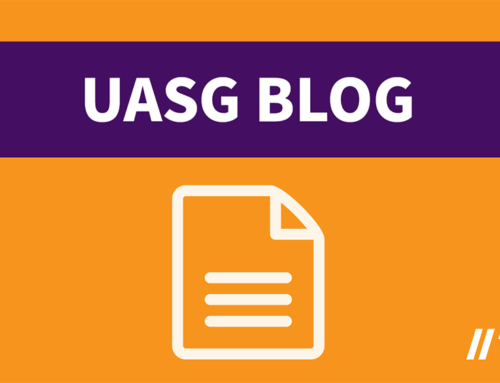By Aman Masjide, UA Ambassador; Consulting Advisor, Trust and Safety, Radix
The ironic fact of the matter remains that there’s rigidity hardcoded into the ever-evolving Internet in the way of Universal Acceptance. But that only makes our wins so much sweeter!
Universal Acceptance (UA) is a fundamental requirement for a truly multilingual and digitally inclusive Internet. UA is important because it ensures that all domain names, including new long top-level domains (TLDs) and Internationalized Domain Names (IDNs), and email addresses are treated equally and can be used by all Internet-enabled applications, devices, and systems.
Without a doubt, the most important stakeholder affected by the poor UA of new TLDs is the consumer of services using the new TLD. And as a leading new gTLD operator, Radix found it prudent to do its part to resolve these issues.
We started working towards addressing UA in early 2019. Since then, our research focused on detecting gaps in the UA-readiness of top websites and social media platforms. As the first step, we conducted an in-depth study to identify these issues faced by our customers regardless of whether they were reported or not. Our study included surveys with some of our customers as well as extensive testing of the most popular websites such as Instagram, Facebook, Twitter, and even websites pertaining to eCommerce, banking, etc.
A Customer-Centric Approach
Delving deep into the customer surveys, we found that some of the most common customer complaints were something along the lines of “I was filling a form on a website and they didn’t accept any email IDs after 3 characters (in the domain extension)” or “Some government and company websites simply don’t recognize my domain (on a new domain extension).”
As more and more of our customers reported their UA-related specific problems, we tested each of those individual cases and tried several ways to reach out to the website/platforms in question to highlight their UA gaps. These reports are now public and can be accessed by anyone here: Websites, Social Media.
A key win for us (and UA!) was with Instagram’s Swipe Up redirect feature. This significant feature remained unavailable for new gTLD domains until mid-2020. With determined focus, we worked with users to report this bug and finally progressed to where new short and new long TLD domain names and email addresses were accepted on contact forms. In addition, the fastest resolution we saw was provided by SurveyMonkey. We alerted them to the fact that their signup/contact forms were not accepting new short or long TLD email addresses, and they fixed it within a week!
While some of these positive instances were undoubtedly motivating, we struggled to get a response from most website owners. When we did, they were, unfortunately, unfavorable. During the course of our research, we tried reaching out to these companies via publicly available support channels, and while we did receive acknowledgement emails, there was little to no commitment to fixing the UA issues.
Our website testing exercise drew inspiration from the Universal Acceptance Steering Group (UASG)’s testing methodology mentioned in their 2020 report.
Observations and Findings from Website Testing
For those unfamiliar with the terms, new short TLDs are TLD extensions with three or fewer characters (e.g., .xyz). New long TLDs are TLD extensions with more than three characters (e.g., .online). IDNs are TLDs in different script extensions (e.g., .भारत).
After testing 787 websites under multiple categories including e-commerce and social media, Radix’s independent study observed that new short TLDs had a Contact Form Acceptance Rate of 93.8% while new long TLDs and IDN extensions came in at 88.81% and 33.93%, respectively. As for Signup Acceptance Rate, new short and new long TLDs came in at 89.4% and 80.4%, but IDNs only had a paltry 23.47%.
| RADIX’s Observations | ||
| Case | Signup Acceptance % | Contact Form Acceptance % |
| New Short | 89.40 | 93.80 |
| New Long | 80.40 | 88.81 |
| IDN | 23.47 | 33.93 |
While the acceptance rates for new short and new long cases are more than 80% under most categories, we see a drastic dip when a domain is an IDN. Such comparisons between categories highlight problem areas and provide direction to ambassadors and members that are advocating for Universal Acceptance.
Observations and Findings from Social Media Testing
As part of the study, we also tested these social media platforms for their UA-readiness of new short and new long TLDs:
- YouTube
- TikTok
Some of the key areas that we tested were the signup flows, features accepting emails and websites, along with their respective linkification after benchmarking the platform performance with a regular .com domain name. We extended the tests to Web, iOS, and Android versions wherever applicable.
For example, the chat feature on Facebook – Android Version, automatically hyperlinks and previews a .com domain name whereas it might not do so for a new long or new short TLD. In another example, WhatsApp seems to hyperlink domains on their chat windows based on a library that may be either hardcoded or outdated.
By far, our biggest challenge remains connecting with website and platform owners. While it is difficult, we believe that with the support of the ICANN community we can collectively work towards boosting outreach efforts. Having said that, there are similar studies being conducted either in silos or through working groups. We encourage all such efforts and look forward to the UASG’s remediation phase.
Conclusion
While our efforts have picked up momentum and the progress made is encouraging, this is just the beginning. We have a long way to go in making the Internet more inclusive of all TLDs so that our customers can operate freely across the web. Only then will it be a level playing field for all users.





